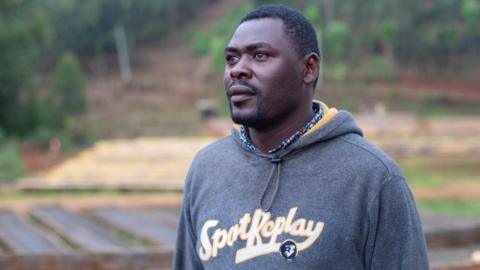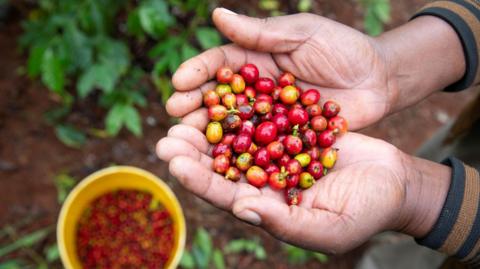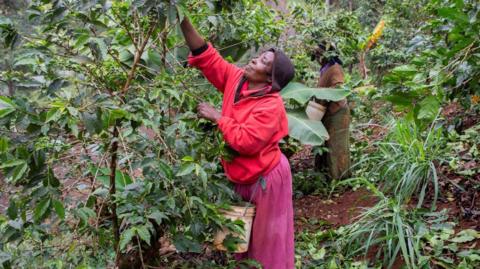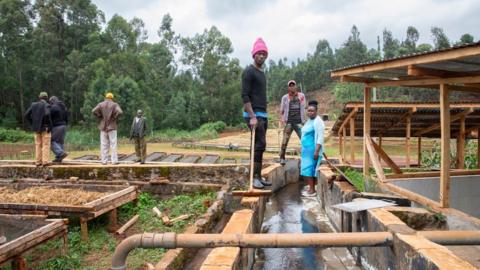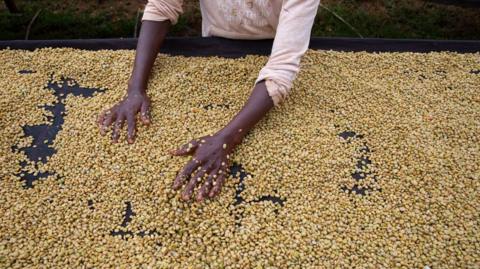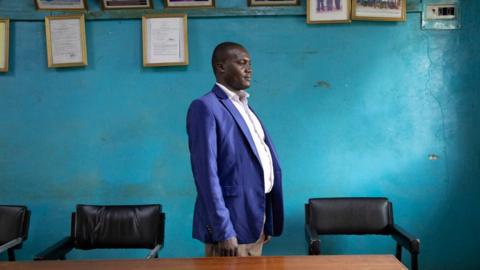The crop has been part of these lush highlands since the late 1890s, when British colonial settlers introduced it.
Now, the area is famous for its unique, top-rated coffee.
Growing the berries is labour intensive - picking, pruning, weeding, spraying, fertilising and transporting the products.
"Coffee requires your full-time concentration, especially when it starts to bloom," Mr Macharia said.
"From that moment up until the day that you are going to harvest - those six months, your full-time job is on the farm."
A coffee tree is a huge investment for cash-strapped farmers, as it can take four years for the fruits to mature.
The price of a single cup of coffee in a chic European café, typically $4 (£3.20), highlights a stark disparity when compared to the earnings of many Kenyan coffee labourers, who make at most $2.30 a day.
Edita Mwangi, who harvests coffee cherries on the red earth hillside overlooking the processing plant, confirms this.
"They don't know the poverty we suffer. You have to struggle day and night just to survive," she said.
With four children depending on her, Ms Mwangi works six days a week, earning about $1.40 a day.
She has to walk 5km (three miles) to reach the farm where she works.
